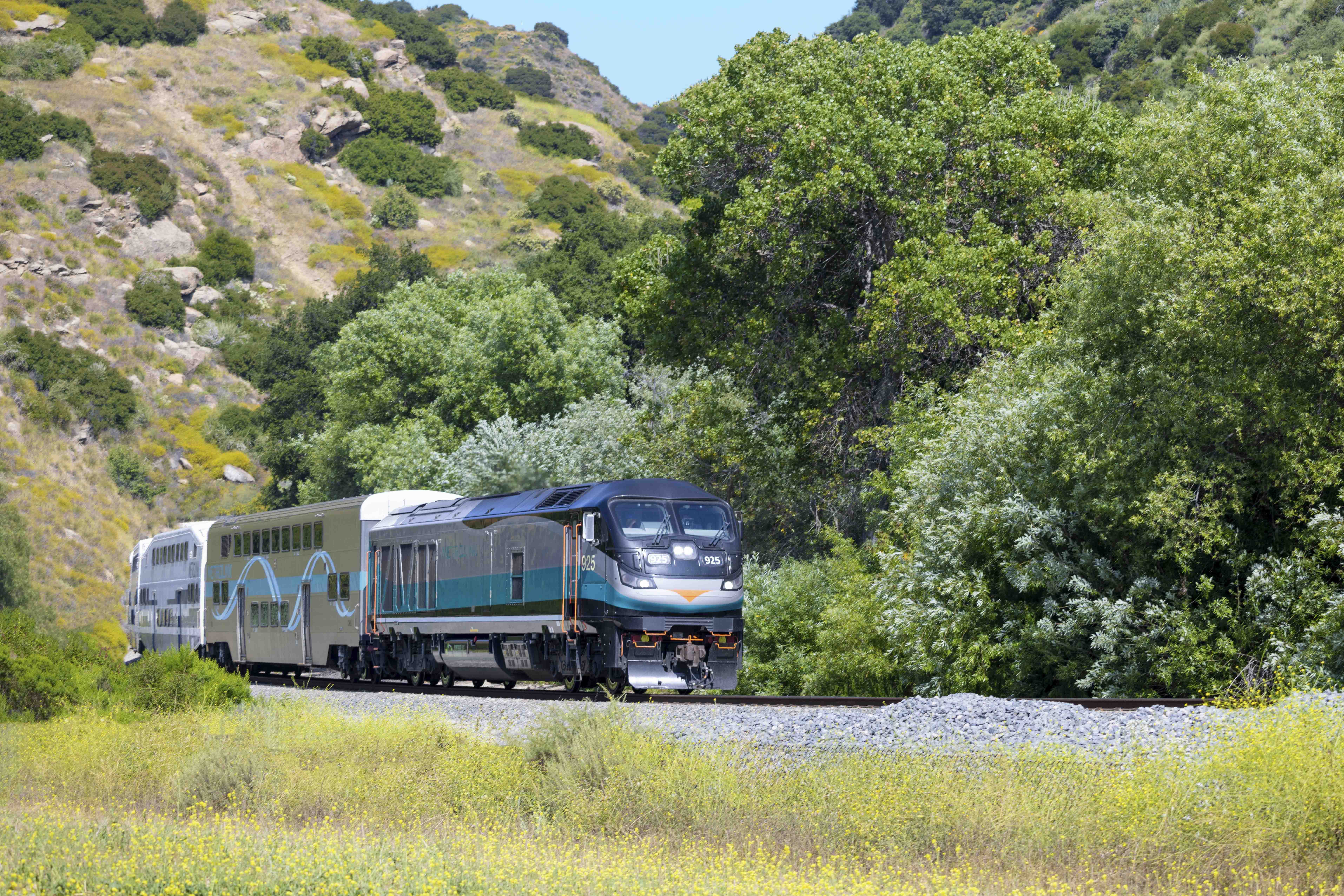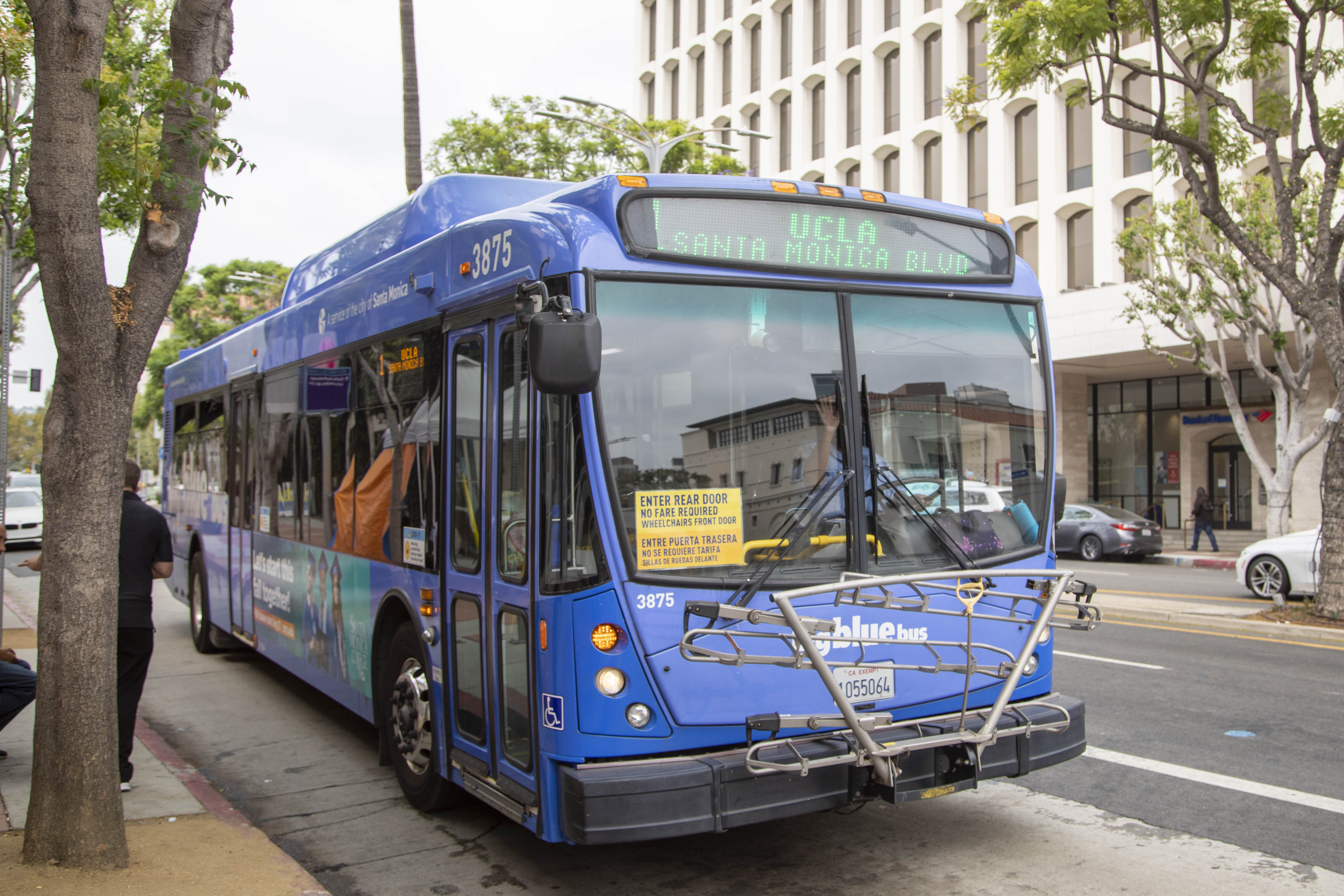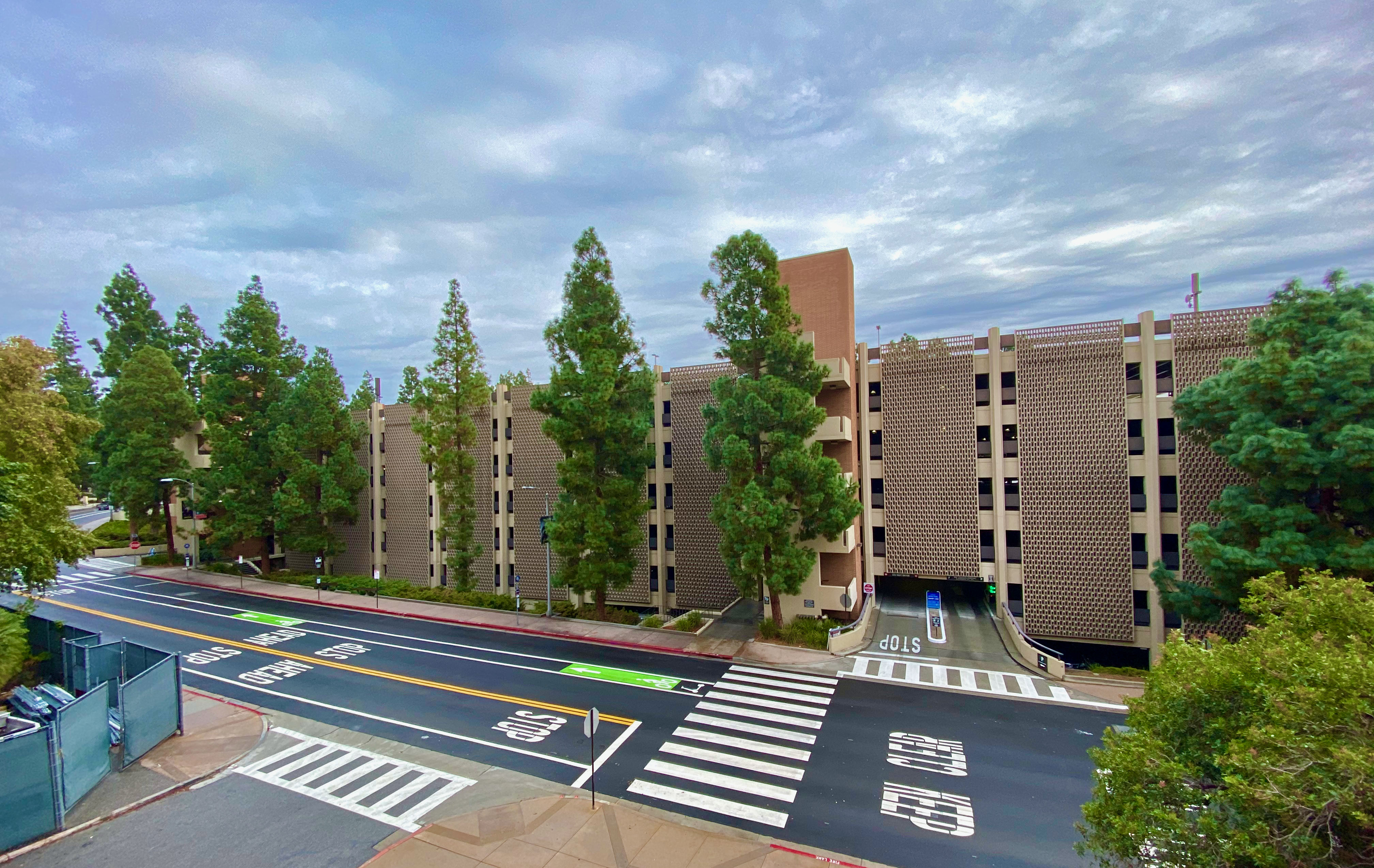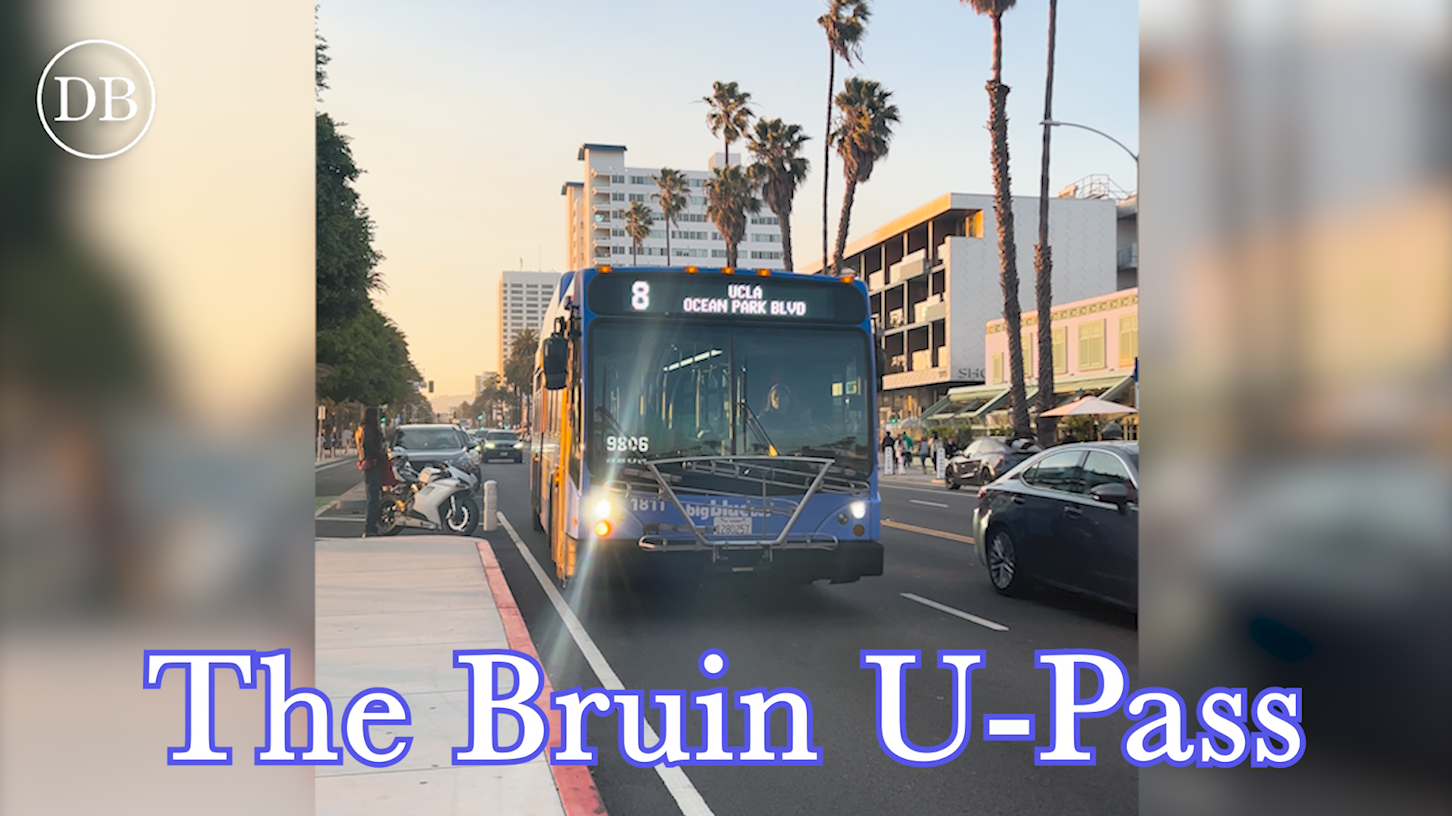Metrolink renews free Student Adventure Pass for K-12, college students

A Metrolink train drives along a track. Metrolink has renewed its Student Adventure Pass for K-12 and college students, providing students with more opportunities for free transportation. (Courtesy of Metrolink)

By Amy L. Wong
Oct. 10, 2024 7:58 p.m.
This post was updated Oct. 11 at 12:47 a.m.
UCLA students can now access a new way to save on transportation.
Metrolink’s Student Adventure Pass allows students from kindergarten through college with a valid student identification to use the Metrolink system for free. The Student Adventure Pass launched in October 2023 and was renewed in June 2024.
Over 2,000 Student Adventure Passes were registered by Sept. 20 using an email associated with the UCLA email domain, and over 1,200 UCLA students have been using the pass since the launch of the program, said Amber Moyers, project manager for the Student Adventure Pass at Metrolink.
Metrolink has service lines in five counties in Southern California – Los Angeles, Orange, Riverside, San Bernardino, and Ventura – for a total of 545 miles of rails, said Erika Cortez, a communications intern at Metrolink.
Students have two methods to access the free Student Adventure Pass.
The first is the mobile Student Adventure Pass, which can be accessed by downloading the Metrolink app, Cortez said. She said that after students verify their email, the pass is added to their mobile ticket wallet in the app. The second method is using paper tickets, available through Metrolink’s ticket vending machines, she added.
Metrolink allows students to travel long distances car free, Moyers said.
“We’re the largest regional rail in California and the third largest in the United States,” she said. “It gives them the freedom to travel without a car, whether it’s for work or school or just exploring SoCal for fun.”
Free transportation can greatly benefit college students, especially those with financial constraints, said Amy Lee, a postdoctoral scholar at the UCLA Institute of Transportation Studies. Lee added that car ownership is expensive due to costs including maintenance, registration and campus parking.
“Huge swaths of college students have really limited incomes, which also makes them really limited in where they can live,” she said. “Transit access and transportation and accessibility, generally, is a really important thing for students or for people who have constrained choices around where they can afford to live.”
The Student Adventure Pass is a helpful resource for accessing career opportunities and exploring California, Cortez said. Saving money through the free pass has allowed her to pursue internships outside of her local area, she added.
“I think the Student Adventure Pass really helps students access higher education,” Moyers said. “College is expensive enough without worrying about your train tickets.”
Introducing college students to public transportation can help them consider using public transportation more once they become older and enter the workforce, said Meredith Yeoman, the public relations manager at Metrolink.
Students using public transportation has lasting implications beyond the individual level. Encouraging the use of public transportation will help future generations fight climate change, Yeoman added.
“Our state has the most ambitious climate action goals of any state in the U.S. And when you’re using public transportation, it’s really the greenest way that you can travel. It gets cars off the road. So that’s a really big deal for us to be able to provide that service to make it free to the next generation,” Yeoman said. “We all know that the younger generation is really attuned to climate change.”
The goal of transportation as a field is to help people get to where they need to be with who they need to be with, Lee said.
“A highway is not an end in and of itself. It’s a means to get somewhere,” Lee said. “Transportation, as its guiding force, or as its guiding philosophy, is ultimately about bringing people and communities to places, to each other and to where they need to go.”





